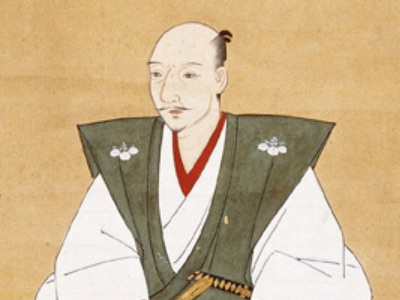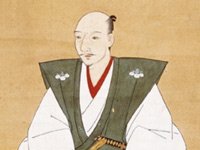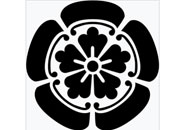Oda Nobunaga (1534-1582)

Unification of Owari Province
In 1551, Oda Nobuhide died unexpectedly. Nobunaga was said to have acted outrageously during his funeral, throwing ceremonial incense at the altar. This convinced many Oda retainers of Nobunaga's mediocrity and lack of discipline. Alienated, they then began to side with his soft-spoken and well-mannered brother, Nobuyuki. Hirate Masahide, a valuable mentor and retainer to Nobunaga, was ashamed by Nobunaga's behavior and performed seppuku. This had a profound effect on Nobunaga, who later built a temple to honor Masahide.
Succession Dispute
Although Nobunaga was Nobuhide's legitimate successor, the Oda clan was divided into many factions, and the clan was technically under the control of Owari's shugo, Shiba Yoshimune. Oda Nobutomo, the deceased Nobuhide's brother and deputy to the shugo, used the weak Yoshimune as his puppet and challenged Nobunaga's place as Owari's new ruler. Nobutomo murdered Yoshimune when it was discovered that he supported and attempted to aid Nobunaga.
Nobunaga persuaded Oda Nobumitsu, a grandfather of Nobuhide, to join his side and, with Nobumitsu's help, slew Nobutomo in Kiyosu Castle, which later became Nobunaga's place of residence for over ten years. Taking advantage of the position of Shiba Yoshikane, Yoshimune's son, as the rightful shugo, Nobunaga forged an alliance with the Imagawa clan of Suruga Province and the Kira clan of Mikawa Province, as both clans had the same shugo and would have no excuse to decline. This also ensured that the Imagawa clan would have to stop attacking Owari's borders.
Although Nobuyuki and his supporters were still at large, Nobunaga took an army to Mino Province to aid Saitō Dōsan after Dōsan's son, Saitō Yoshitatsu, turned against him. The campaign failed, as Dōsan was killed in the Battle of Nagara-gawa, and Yoshitatsu became the new master of Mino in 1556.
Elimination of Nobuyuki
A few months later Nobuyuki, with support from Shibata Katsuie and Hayashi Hidesada, rebelled against Nobunaga. The conspirators were defeated at the Battle of Inō, but were pardoned after the intervention of Tsuchida Gozen, the birth mother of Nobunaga and Nobuyuki. The next year, Nobuyuki again planned to rebel. Nobunaga was informed of this by Shibata Katsuie, then faked illness to get close to Nobuyuki and assassinated him in Kiyosu Castle.
In 1558, he protected Suzuki Shigeteru in the Siege of Terabe.
By 1559, Nobunaga had eliminated all opposition within the clan and Owari Province. He continued to use Shiba Yoshikane as a pretext to make peace with other daimyo, though it was later discovered that Yoshikane had secretly corresponded with the Kira and Imagawa clans, attempting to oust Nobunaga and restore the Shiba clan's place. Nobunaga eventually cast him out, voiding alliances created in the Shiba clan's name.
HISTORY

RESOURCES
This article uses material from the Wikipedia article "Oda Nobunaga (1534-1582)", which is released under the Creative Commons Attribution-Share-Alike License 3.0.
© Stories Preschool. All Rights Reserved.









